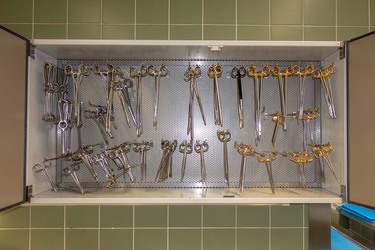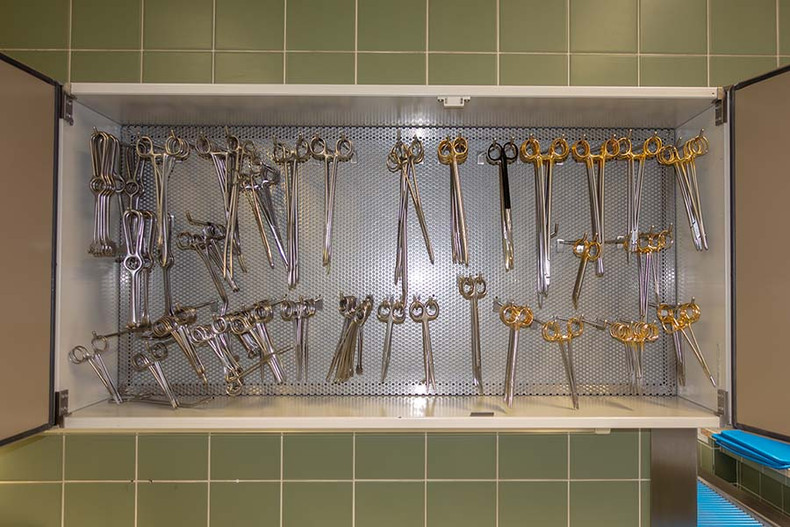
It has been proven repeatedly that if an item is not properly cleaned it cannot be effectively reprocessed. Healthcare professionals know, “If it isn’t clean it can’t be sterilized or high-level disinfected”.
The first and most important step in reprocessing reusable medical devices is thorough cleaning and rinsing. So how is cleaning defined? Let’s look at what the Association for the Advancement of Instrumentation (AAMI), and the Association of periOperative Registered Nurses (AORN) states.
|
Cleaning Definitions |
|
|
AAMI |
AORN |
| ST79:2017, the Comprehensive guide to steam sterilization and sterility assurance in health care facilities |
Guidelines for Cleaning and Care of Surgical Instruments. In: Guidelines for the Perioperative Practice, 2018. |
| Cleaning: “Removal of contamination from an item to the extent necessary for further processing or for the intended use” |
Cleaning: “A process that uses friction, detergent, and water to remove organic debris; the process by which any type of soil, including organic debris, is removed to the extent necessary for further processing or for the intended use. Cleaning removes rather than kills microorganisms.” |
AAMI ST79:2017 Section 7 provides guidance for the selection and use of cleaning, disinfection, and other decontamination steps for medical devices. The first and most important step in reprocessing reusable medical devices is thorough cleaning and rinsing. Cleaning removes microorganisms and other organic and inorganic materials. Cleaning does not kill microorganisms, and subsequent disinfection or sterilization process might be necessary to render the item safe for next use. Rinsing removes detergent and other residues that might interfere with subsequent processes.
All microorganisms should be considered potentially pathogenic. Their ability to cause an infection depends on numerous factors, including the number and virulence of infectious organisms, the presence of a portal of entry, and the susceptibility of the host.
The cleaning and/or microbicidal process suitable for a particular item depends on many factors:
- the device manufacturer’s written IFU,
- the necessary level of microbial lethality (e.g., a higher assurance of lethality is needed for items that have been in contact with body tissues, blood, or other bodily fluids than for items that have only been in contact with unbroken skin),
- the design of the device,
- the materials from which the device is made,
- the intended use of the device; and
- whether the device was exposed to prions.
The next level of processing is determined by how the device will be used and for that, we refer to the Spaulding classification system.
Whatever the following level of processing is required, it is extremely important to remember the microbicidal processing might not be effective if soil has not been first removed by adequate cleaning. So how do you know if your cleaning efforts have been effective?
A number of methods can be used to evaluate the results of the cleaning process. Ideally, cleaning verification by users should include :
- visual inspection, sometimes involving the use of a lighted magnifying glass for inspecting the cleanliness of device surfaces or the use of borescope cameras for inspecting the internal channels of lumened instruments;
- testing the cleaning efficacy of equipment; and
- monitoring key cleaning parameters (e.g., temperature).
Manufacturers should provide users with such tests so that medical devices can be tested directly after cleaning in a way that will not damage the device or require re-cleaning.
Health care professionals should inspect every device for visible organic soil and contamination in a simple functionality check, usually as part of the inspection, preparation, and packaging procedure. However, residual organic soil and microbial contamination could be present on an accessible surface even though the device “looks clean.”
A more objective and sensitive method than visual inspection is to measure the levels of organic soil and microbial contamination on the cleaned device. There are many commercially available products that can be used to evaluate the results of the cleaning process (e.g., protein, carbohydrate, adenosine triphosphate) that allow users to quickly verify that cleaning has been effective. More information about user verification of cleaning processes is described in detail in AAMI ST79:2017 Annex D.
The health care organization should purchase only those devices that can be decontaminated effective and efficiently by a method available in the health care facility.
REFERENCES:
ANSI/AAMI ST79:2017, Comprehensive guide to steam sterilization and sterility assurance in health care facilities
Guidelines for Cleaning and Care of Surgical Instruments. In: Guidelines for the Perioperative Practice. Denver, CO: AORN, Inc; 2018

